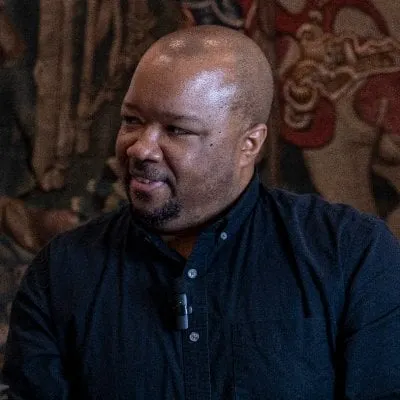Scanning and analyzing a blockchain can be challenging, particularly when sorting through tens of thousands of blockchain addresses and millions of transactions. It's tedious and time-consuming and the story being told is often elusive. The Austin-based startup Blocktrace hopes that artificial intelligence can make the blockchain analysis process faster, and uncovering trends and anomolies easier.
Launched in 2018 by software engineer Shaun MaGruder, whose background includes work as the head of training at blockchain forensics firm, Chainalysis, Blocktrace is an AI-fortified blockchain forensic and analytical service provider. Using a chatbot they named Robby the Robot—after the iconic character from the sci-fi film "Forbidden Planet"—Blocktrace developed their AI to interact with data on the Bitcoin blockchain.
Blocktrace CEO MaGruder told Decrypt in an interview that the company decided to start the Robby project with Bitcoin because of its large sample size and history.
ChatGPT + Bitcoin, please meet Robby the Robot. 🤖
As a language model equipped with advanced natural language processing technology, Robby can effectively interpret complex user questions and provide insightful answers. pic.twitter.com/W2OHChBoIc
— BLOCKTRACE (@blocktrace) March 28, 2023
"Bitcoin is a great project to start with and will likely always be around, just like Ethereum," MaGruder said. "It's considered the OG because it was the first and has a large pool of user base addresses with a lot of activity."
According to MaGruder, a copy of the Bitcoin blockchain data is stored in Blocktrace's database—already a significant technical feat. Enhanced with an AI layer, their application allows users to ask natural language questions like a virtual assistant.
A natural language model is a type of artificial intelligence designed to understand and process human language, similar to how humans do.
"Users can quickly ask for specific information, such as transactions between dates and amounts," MaGruder said. "This saves time compared to the manual process, which could take one to two hours using a blockchain explorer."
MaGruder explains that Blocktrace aims to enable investigators and users to use the technology developed by OpenAI to quickly find Bitcoin addresses and identify transactions that occurred on the network with greater accuracy and detail.
"Instead of requiring a data engineer or data scientist to translate natural language questions into SQL queries, Robbie has already been trained on the data model and can quickly fetch results for the user," MaGruder said, calling the process more efficient and one that does not require continuous training for new data scientists.
While still in beta, Robby is expected to be made available for the public to use later this year. Before rolling Robby out to the public, however, MaGruder said the chatbot would first be given to a closed group to test.
"We want to make sure that Robbie is stable and that we don't fall on our faces when we release it to the public," MaGruder said. "We want to make sure that the questions that the public is going to ask are questions we've already asked Robbie."
"As expected, people will compare Robbie to a traditional blockchain explorer and determine whether Robbie is correct or incorrect," MaGruder said. "To gather feedback, we will implement a thumbs up and thumbs down button. A thumbs up will serve as positive reinforcement, while a thumbs down will indicate areas needing improvement."
Blocktrace is just the latest Web3 company looking to leverage the power of artificial intelligence for blockchain analysis. Others using the technology include Elliptic, Chainalysis, CipherTrace, and Nansen.
"It's something we're looking at very deeply," Andrew Thurman, a Nansen engineer, told Decrypt at ETH Denver. "You can use things like AI analysis on the blockchain to see if [wallets] are doing the same things at the same time." Thurman added that even if there are no explicit connections, you can infer within a good level of certainty that all of those wallets are tied to the same entity.
"Algorithmic labeling, and AI labeling, I think, have a pretty significant future in blockchain analysis," Thurman said.

